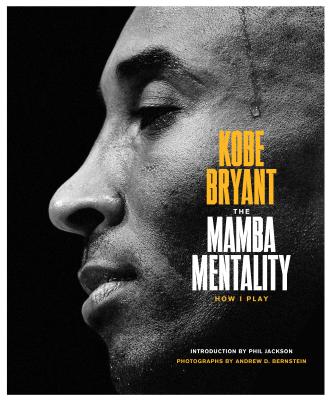Knowledge of the phase behavior of liquid–liquid systems is indispensable for the design and optimization of process equipment. However, the ab initio prediction of liquid–liquid equilibria (LLE) is not yet reliable. Therefore, experimental generation of LLE data is still necessary. Current methods for the characterization of LLE consume large amounts of material, and the large volumes lead to large diffusion paths and hence long equilibration times, unless the mixture is thoroughly stirred. The components are typically quantified chromatographically, because chromatographic methods allow for the analysis of a broad range of chemicals. Automated setups are able to reduce the overall system volume, but merely determine partition ratios. They often use spectrometric quantification, because only one component is of interest. The use of spectrometry instead of chromatography leads to shorter times for analysis, but restricts the range of chemicals to optically active compounds. In this work, the benefits of the automated setups and of the conventional characterization of LLE have been combined: a platform has been set up to reduce the need for human interaction from sample preparation, to chromatographic analysis, up to data processing and reduction. The system volumes could be reduced from typically 25mL in jacketed equilibrium cells to 1 mL. The developed calibration technique allows for a substantial reduction in material, because neither solvents nor standards are needed. Instead of long equilibration times, now analytics is the bottleneck in the characterization of LLE, because chromatographic methods are rather slow. Therefore, the use of model-based optimal experimental design was investigated for the characterization of LLE, so that the characterization time could be reduced by reducing the number of LLE experiments. The optimal designs concentrate on few distinct experimental settings, and a large fraction of the experimental effort is put on areas where the curvature of the binodal curve is large. By applying model-based optimal experimental design, the prediction accuracy could at least be improved by a factor 2. Consequentially, the number of experiments could be reduced by a factor 2 without losing prediction accuracy compared to conventional designs. The developed automated setup was used to investigate the phase behavior of novel biofuel-blends with water. It was found that the water solubility in pure biofuels was up to 4 orders of magnitude larger than in conventional fuels. However, by adding blend components, the water solubility could be drastically reduced. The biofuel solubility in water is much larger than the solubility of conventional fuels in water. The blend components did not influence the solubility of conventional fuels in water.
Knowledge of the phase behavior of liquid–liquid systems is indispensable for the design and optimization of process equipment. However, the ab initio prediction of liquid–liquid equilibria (LLE) is not yet reliable. Therefore, experimental generation of LLE data is still necessary. Current methods for the characterization of LLE consume large amounts of material, and the large volumes lead to large diffusion paths and hence long equilibration times, unless the mixture is thoroughly stirred. The components are typically quantified chromatographically, because chromatographic methods allow for the analysis of a broad range of chemicals. Automated setups are able to reduce the overall system volume, but merely determine partition ratios. They often use spectrometric quantification, because only one component is of interest. The use of spectrometry instead of chromatography leads to shorter times for analysis, but restricts the range of chemicals to optically active compounds.
In this work, the benefits of the automated setups and of the conventional characterization of LLE have been combined: a platform has been set up to reduce the need for human interaction from sample preparation, to chromatographic analysis, up to data processing and reduction. The system volumes could be reduced from typically 25mL in jacketed equilibrium cells to 1 mL. The developed calibration technique allows for a substantial reduction in material, because neither solvents nor standards are needed. Instead of long equilibration times, now analytics is the bottleneck in the characterization of LLE, because chromatographic methods are rather slow. Therefore, the use of model-based optimal experimental design was investigated for the characterization of LLE, so that the characterization time could be reduced by reducing the number of LLE experiments. The optimal designs concentrate on few distinct experimental settings, and a large fraction of the experimental effort is put on areas where the curvature of the binodal curve is large. By applying model-based optimal experimental design, the prediction accuracy could at least be improved by a factor 2. Consequentially, the number of experiments could be reduced by a factor 2 without losing prediction accuracy compared to conventional designs. The developed automated setup was used to investigate the phase behavior of novel biofuel-blends with water. It was found that the water solubility in pure biofuels was up to 4 orders of magnitude larger than in conventional fuels. However, by adding blend components, the water solubility could be drastically reduced. The biofuel solubility in water is much larger than the solubility of conventional fuels in water. The blend components did not influence the solubility of conventional fuels in water.
Get Efficient Measurement of Liquid–Liquid Equilibria Using Automation and Optimal Experimental Design by at the best price and quality guranteed only at Werezi Africa largest book ecommerce store. The book was published by Verlag G. Mainz and it has pages. Enjoy Shopping Best Offers & Deals on books Online from Werezi - Receive at your doorstep - Fast Delivery - Secure mode of Payment
 Jacket, Women
Jacket, Women
 Woolend Jacket
Woolend Jacket
 Western denim
Western denim
 Mini Dresss
Mini Dresss
 Jacket, Women
Jacket, Women
 Woolend Jacket
Woolend Jacket
 Western denim
Western denim
 Mini Dresss
Mini Dresss
 Jacket, Women
Jacket, Women
 Woolend Jacket
Woolend Jacket
 Western denim
Western denim
 Mini Dresss
Mini Dresss
 Jacket, Women
Jacket, Women
 Woolend Jacket
Woolend Jacket
 Western denim
Western denim
 Mini Dresss
Mini Dresss
 Jacket, Women
Jacket, Women
 Woolend Jacket
Woolend Jacket
 Western denim
Western denim
 Mini Dresss
Mini Dresss




